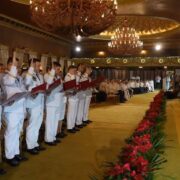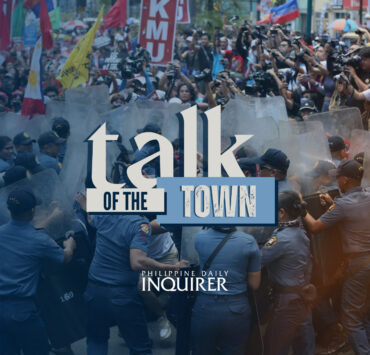Losing heroes, forgetting history

If you happen to survive, and I fail, tell our people that the women of the Philippines did their part also in making the ember sparks of truth and liberty alive till the last moment.” This is an excerpt from the final message that Girl Scouts of the Philippines founder Josefa Llanes Escoda shared with Lt. Jose L. Llanes in January 1944. Escoda, a social worker by profession, had been operating underground with her husband during the Japanese Occupation to secretly provide medicine, food, and other supplies to prisoners of war detained in concentration camps. The last time anyone saw her alive was a year after she gave those last words, imprisoned and with signs of having been severely beaten. It is believed that she was executed and buried in an unmarked gave in Manila along with thousands of other Filipinos who resisted the Japanese rule.
I first learned about Escoda in grade school but never forgot her name. As much as I’d like to pretend that it’s because her story had always resonated with me, I only fully appreciated her life’s work as I got older and found myself sharing the same passion for many of her causes. The truth is much simpler: I never forgot her because she is one of the heroes prominently featured in the P1,000 bill. While some people may believe that these images are purely decorative, having heroes printed on our money serves as an informal educational tool. Regularly seeing their names and faces prompts curiosity about their accomplishments, promotes discussion about their legacies’ lasting impact on the country, and encourages citizens to remember and honor their contributions.
In 2010, the Bangko Sentral ng Pilipinas (BSP) shared the same sentiment. A central theme of the 2010 New Generation Currency was a tribute to Filipino heroism. According to a BSP-published paper by Maja L. Malic and Nenette E. Malabrigo, featuring the heroes alongside scenic spots and natural wonders was an effort by the BSP to tell a unified story of our nation. The personalities that were chosen are not only important figures in our history, they also “perpetuate the values and aspirations that are still applicable to the current generation such as bravery, patriotism, gallantry, selflessness, and dedication to duty.”
Last week, however, the BSP unveiled a new design for polymer banknotes, shifting focus from Philippine heroes to native animals and plants alongside traditional local weave designs. The said redesign started in 2021 when the portraits of Escoda and other World War II heroes Jose Abad Santos and Vicente Lim were replaced by a Philippine eagle in the P1,000 bill. Subsequent banknote designs show that the faces of Ninoy and Cory Aquino, Manuel Roxas, and Sergio Osmeña have been replaced with images of the Visayan spotted deer, Palawan peacock-pheasant, and Visayan leopard cat, respectively. Lawyer Sarah Severina Curtis, director of the BSP Banknotes and Securities Production Management Department, clarified that the images of heroes will remain on existing banknotes that are already in circulation.
This decision cotmes against a backdrop of growing concerns from critics over historical revisionism. Members of the August Twenty-One Movement (ATOM), an organization formed after the Aug. 21, 1983 assassination of former senator Ninoy Aquino, criticized how the omission of the heroes could serve as a tool in erasing their contributions. “Seriously, are we really going to forget those who have fallen during the night? Do we really want a country devoid of heroes? Are they trying to make us forget that the blood of heroes runs in our veins so they can replace it with the blood of slaves and let tyrants rule again?” the group asked in a statement.
The BSP explained that featuring indigenous flora and fauna showcases other important elements of Filipino identity and will promote much-needed environmental awareness in the country. While environmental stewardship is an important value, especially in the context of climate change and ecological decline, this reasoning feels incomplete. In the BSP’s old design approach, they managed to celebrate Philippine biodiversity and cultural heritage while also highlighting our history of resistance against colonization and oppression. Regardless of whether it is intentional or not, removing heroes from the design of our new banknotes sends an inadvertent message: That the sacrifices of our national heroes are less worthy of importance and remembrance.
Honoring the contributions of heroes like Escoda helps remind us that the freedoms we enjoy today were hard-won and that each generation has a responsibility to protect and cherish them. Currency is not just a tool for transaction and exchange, it also reflects who we are and what we value as a nation. By sidelining our heroes, we risk further dulling the sharpness of our collective memory. Our heroes and our biodiversity are both integral components of the ecosystem of our national identity. To privilege one over the other is a disservice to our country and to the people who helped shape it.
—————-
eleanor@shetalksasia.com

















